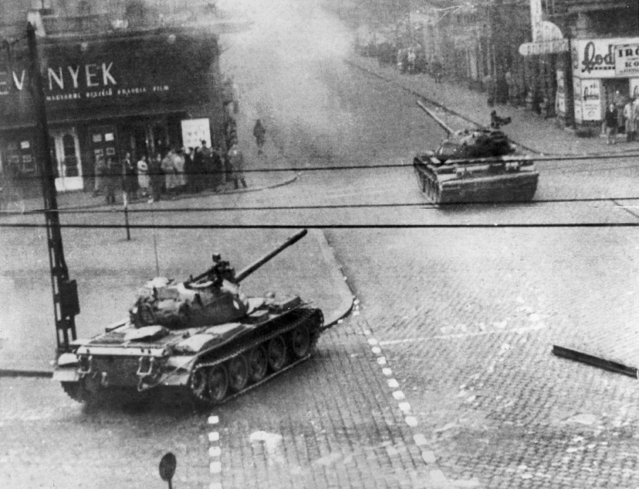
Soviet-built tanks wheel into action in a smoke-filled Budapest street in Hungary's flaring revolution against communist satellite government, October 27, 1956. Citizens stand close to building fronts to stay out of the line of fire. Many Hungarian Army units reportedly have gone over to the rebels in fighting against police and units of the Soviet Red Army. (Photo by AP Photo)
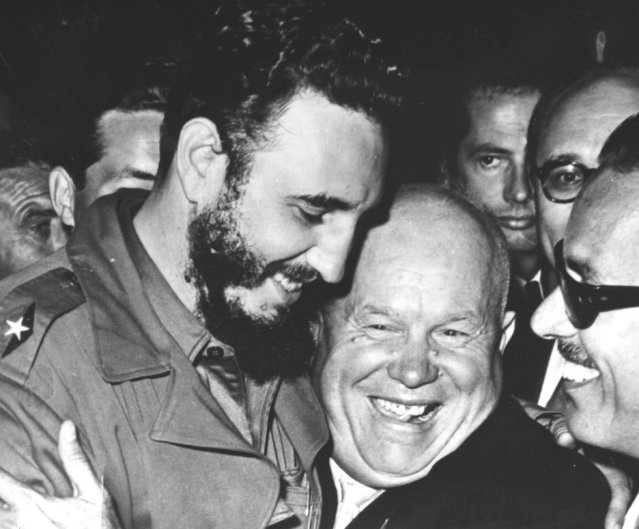
Cuban Prime Minister Fidel Castro, left, is embraced by Soviet Premier Nikita Khrushchev in the United Nations General Assembly on September 20, 1960. The two men are included in the rogues' gallery of unsavory world leaders who have visited New York for the U.N. General Assembly. (Photo by Marty Lederhandler/AP Photo)
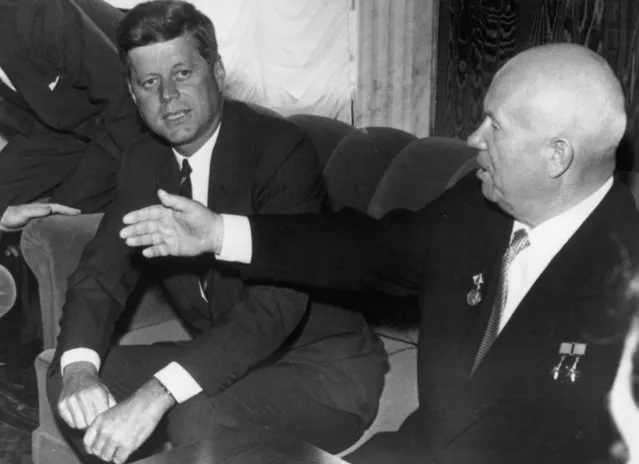
Soviet leader Nikita Khrushchev (1894 – 1971, right) with U.S. President John F. Kennedy (1917 – 1963) at the U.S. Embassy during their summit meeting in Vienna, 2nd June 1961. (Photo by Central Press/Hulton Archive/Getty Images)
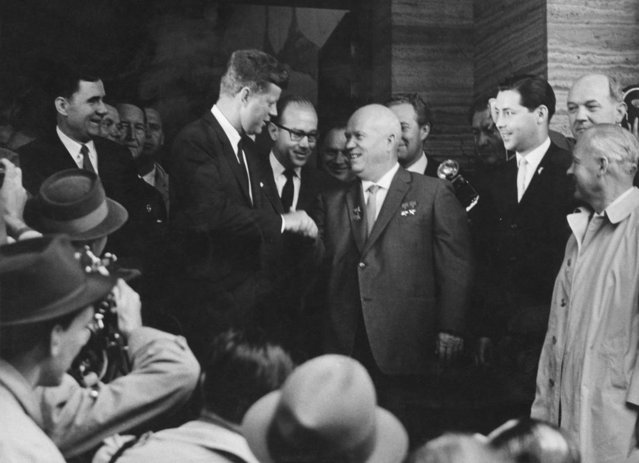
US President John F Kennedy shakes hands with Soviet premier Nikita Khrushchev at the Vienna Summit, Austria, June 4, 1961. (Photo by Pictorial Parade/Archive Photos/Getty Images)
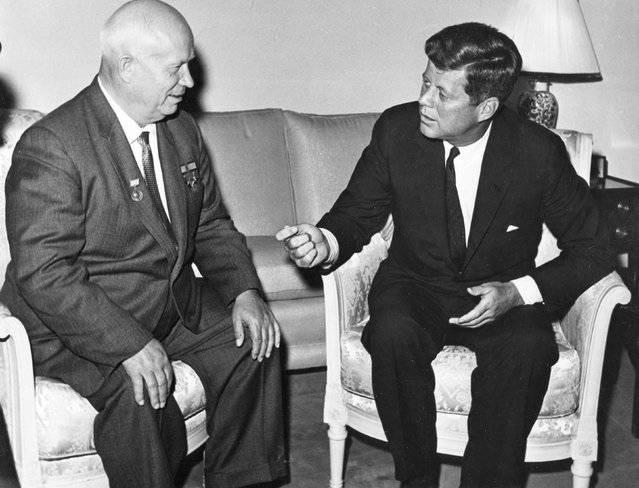
Former United States President John F. Kennedy (R) meets with Nikita Khrushchev, former chairman of the council of Ministers of the Soviet Union, at the U.S. Embassy residence in Vienna, Austria in this June 1961 handout image. November 22, 2013 will mark the 50th anniversary of the assassination of President Kennedy. (Photo by Evelyn Lincoln/Reuters/The White House/John F. Kennedy Presidential Library)
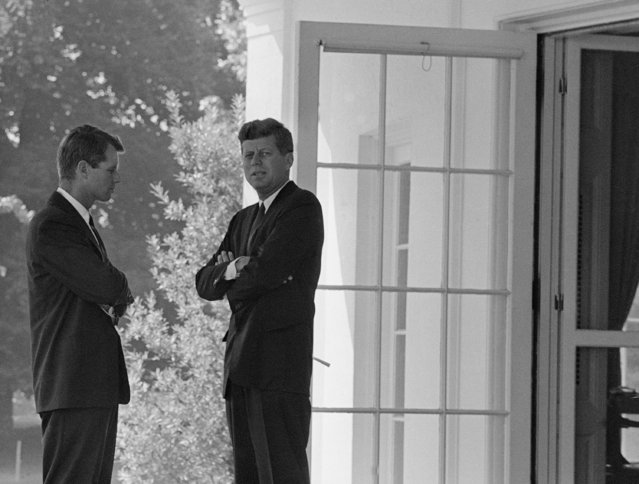
U.S. President John F. Kennedy, right, confers with his brother Attorney General Robert F. Kennedy at the White House in Washington, D.C., on October 1, 1962 during the buildup of military tensions between the U.S. and the Soviet Union that became Cuban missile crisis later that month. (Photo by AP Photo)
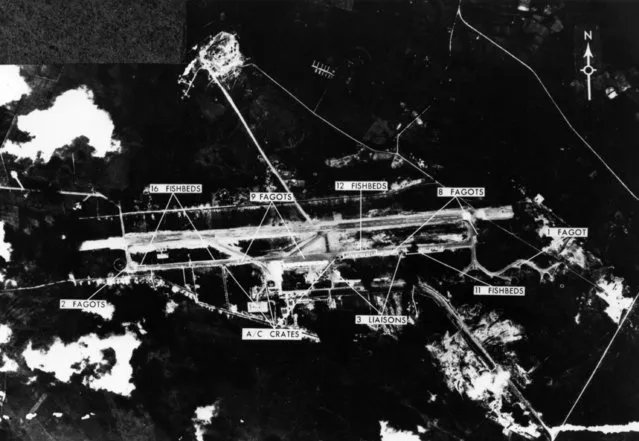
High performance X1G-21 aircraft and sites being prepared for Soviet missiles deployed by Khrushchev at an airfield in Cuba during the Cuban Missile Crisis in 1962. (Photo by Keystone/Getty Images)

A spy photo of a medium range ballistic missile base in San Cristobal, Cuba, with labels detailing various parts of the base, displayed October of 1962. (Photo by Getty Images)
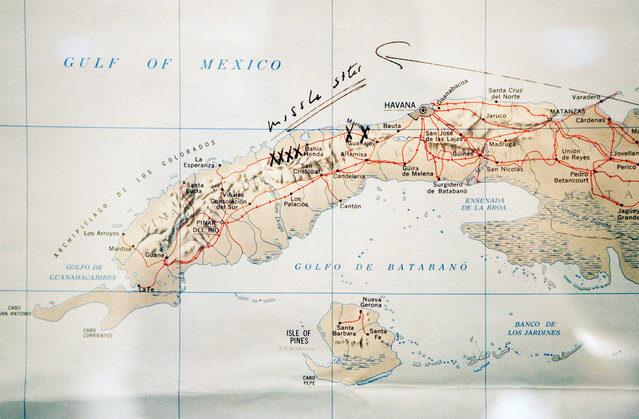
A map of Cuba annotated by former U.S. President John F. Kennedy, displayed for the first time at the John F. Kennedy Library in Boston, Massachusetts, on July 13, 2005. Former President Kennedy wrote “Missile Sites” on the map and marked them with an X when he was first briefed by the CIA on the Cuban Missile Crisis on October 16, 1962. (Photo by Brian Snyder/Reuters)
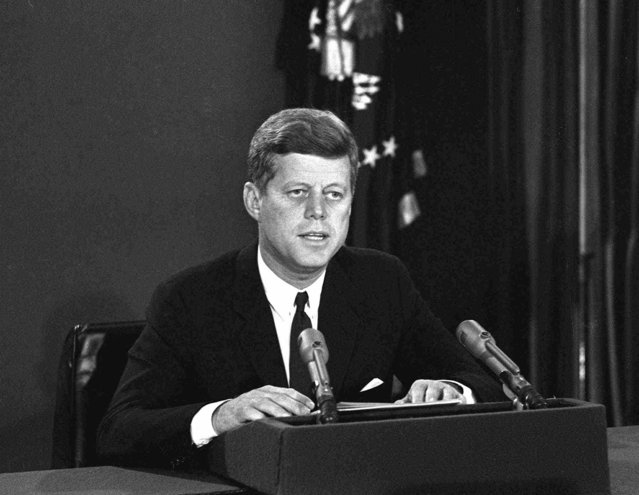
President John F. Kennedy makes a national television speech October 22, 1962, from Washington. He announced a naval blockade of Cuba until Soviet missiles are removed. (Photo by AP Photo)
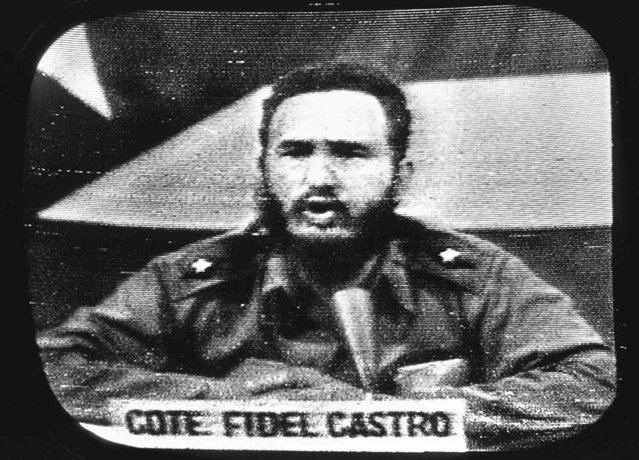
Cuban President Fidel Castro replies to President Kennedy's naval blockade via Cuban radio and television on October 23, 1962. To defuse the Cuban missile crisis, President Kennedy promised not to invade the island nation, but newly declassified documents show he later retreated from the pledge, fearing Cuba could become an “invulnerable base”. The change of heart meant that the U.S.-Soviet understandings that resolved the 1962 crisis were never made permanent. (Photo by AP Photo)
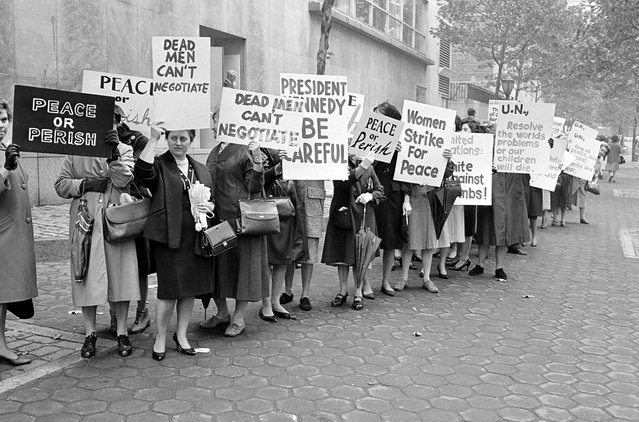
Picketers representing an organization known as Women Strike for Peace carry placards outside the United Nations headquarters in New York City, where the U.N. Security Council considers the Cuban missile crisis in a special meeting, on October 23, 1962. (Photo by AP Photo)
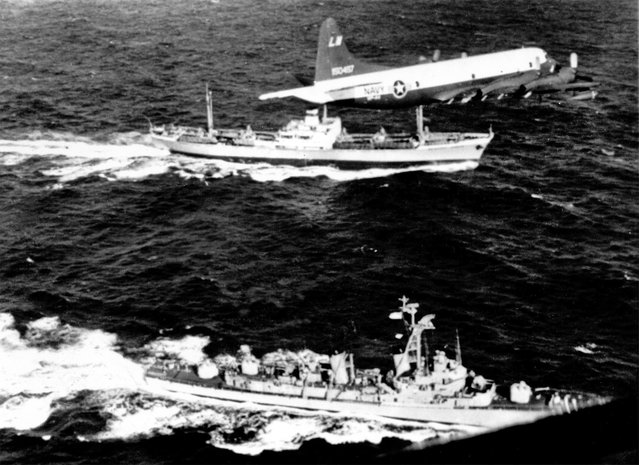
The U.S. destroyer Barry pulls alongside the Russian freighter Anosov in the Atlantic Ocean, November 10, 1962, to inspect cargo as a U.S. patrol plane flies overhead. The Soviet ship presumably carries a cargo of missiles being withdrawn from Cuba. The interception took place about 780 miles northeast of Puerto Rico. (Photo by AP Photo)
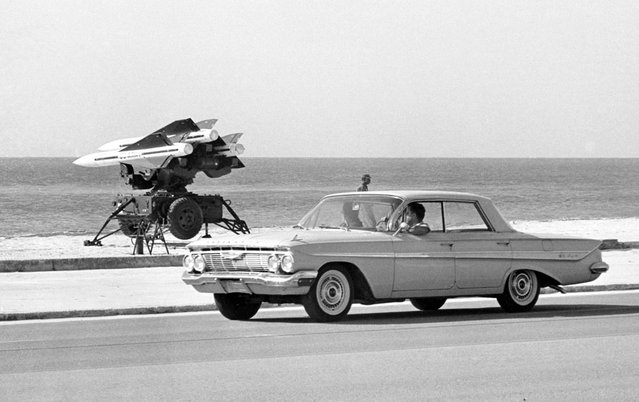
U.S. Army anti-aircraft rockets, mounted on launchers and pointed out over the Florida Straits in Key West, Florida, on October 27, 1962. (Photo by AP photo)

Members of the Campaign for Nuclear Disarmament (CND) march during a protest against the U.S. action over the Cuban missile crisis, on October 28, 1962 in London, England. (Photo by Getty Images)
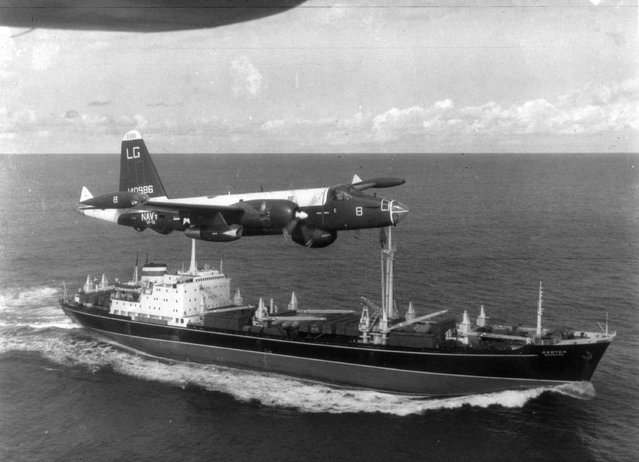
A P2V Neptune U.S. patrol plane flies over a Soviet freighter during the Cuban missile crisis in 1962. (Photo by Getty Images)
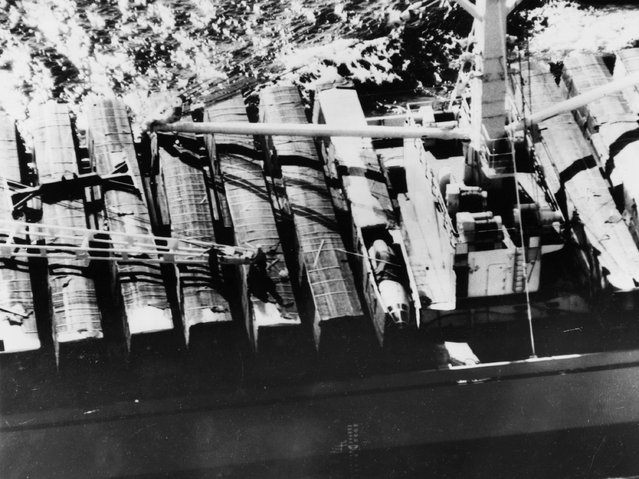
The Soviet ship Kasimov removes 15 Soviet I1-28 aircraft from Cuba after the U.S. asked for their withdrawal. (Photo by Getty Images)

Anastas Ivanovich Mikoyan (1895 – 1978) Soviet politician in his capacity as Deputy Premier of the USSR meeting President Kennedy of America at the White House for discussions on Cuba, following the Cuban missile crisis. (Photo by Keystone/Getty Images)
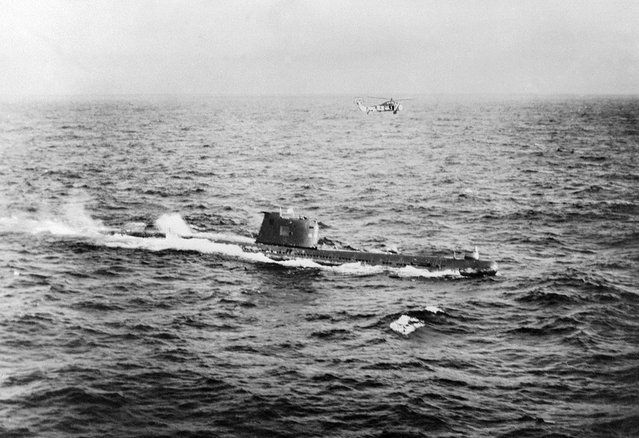
A Soviet submarine near the Cuban coast controlling the operations of withdrawal of the Russian Missiles from Cuba in accordance with the US-Soviet agreement, on November 10, 1962. American planes and helicopters flew at a low level to keep close check on the dismantling and loading operations, while US warships watched over Soviet freighters carrying missiles back to Soviet Union. (Photo by Getty Images)
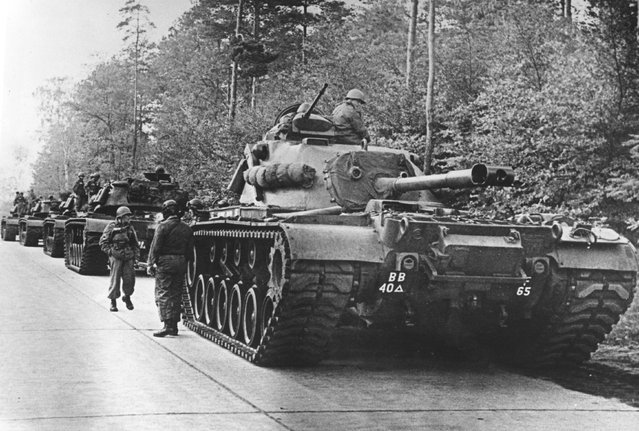
American tanks on alert in the Berlin Grunewald, West Germany, as the crisis over the Cuban blockade looms during the Cuban missile crisis, on 25th October 1962. (Photo by Keystone/Getty Images)
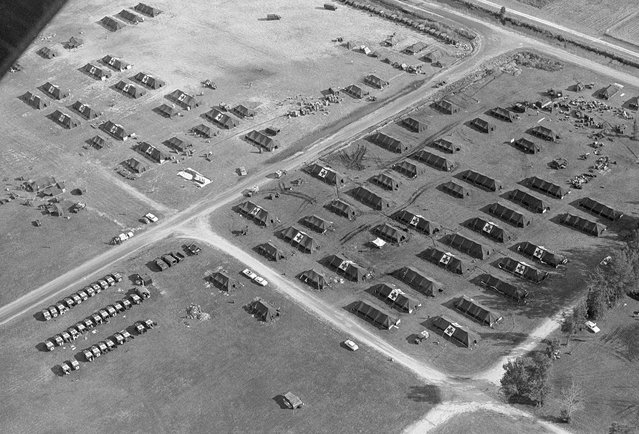
A group of U.S. Army hospital tents and ambulances, set up at the Opa Locka airport, formerly a marine air station in Miami, Florida in November of 1962. (Photo by Harold Valentine/AP Photo)
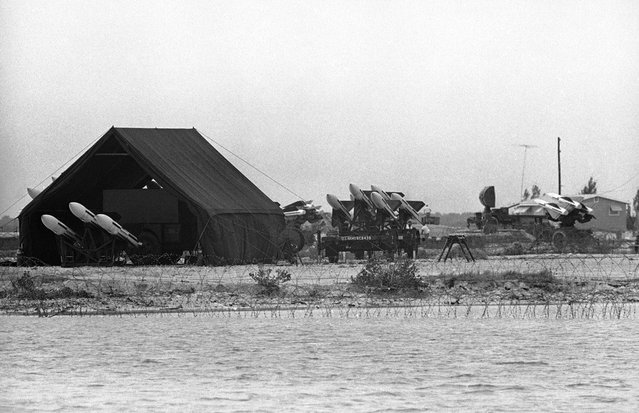
Buildup of troops and military equipment, rushed to south Florida to launch an invasion of Cuba if it had been ordered, remained on the keys, between Miami and Key West. This unit, showing no sign of dismantling, was manned and ready with its anti-aircraft missiles in Key West on November 21, 1962. (Photo by AP Photo)
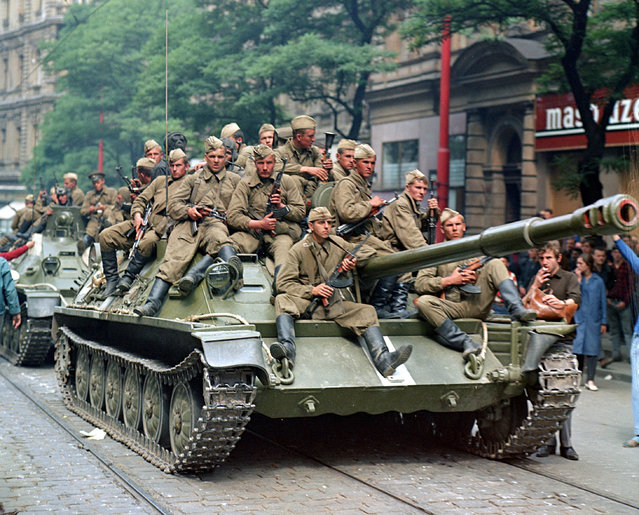
Soviet Army soldiers sit on their tanks in front of the Czechoslovak Radio station building in central Prague during the first day of Soviet-led invasion to then Czechoslovakia on August 21, 1968. (Photo by Libor Hajsky/Reuters)
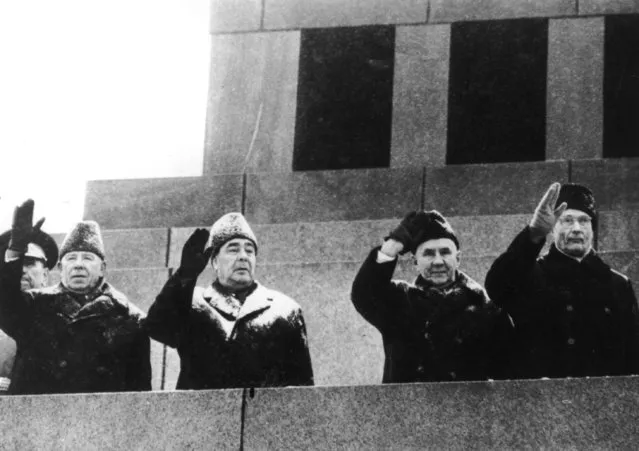
Soviet leader Leonid I. Brezhnev (1906 – 1982) and fellow Politburo members, left to right, Nikolai V. Podgorny (1903 – 1983), Brezhnev, Alexei N. Kosygin (1904 – 1980), Mikhail A. Suslov (1902 – 1982) watching the Bolshevik anniversary parade in Moscow as the snow falls on Lenin's tomb, 1970. (Photo by Keystone/Getty Images)
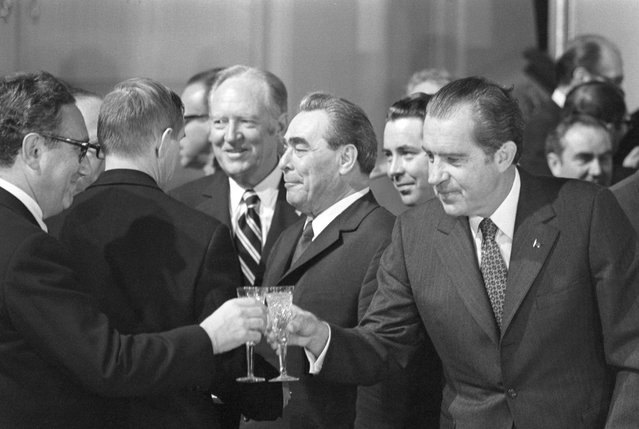
US President Nixon reaches to clink his glass with that of Dr. Henry Kissinger, Presidential Advisor, in Moscow May 26th after signing of a strategic-arms limitation agreement with Soviet leaders, June 6, 1972. Just behind the glasses are US State Secretary William Rogers (l) and Soviet Russia's Leonid Brezhnev, Communist Party General Secretary. Kissinger was responsible for many of the reparations and details of the summit conference. (Photo by Bettmann/Corbis)
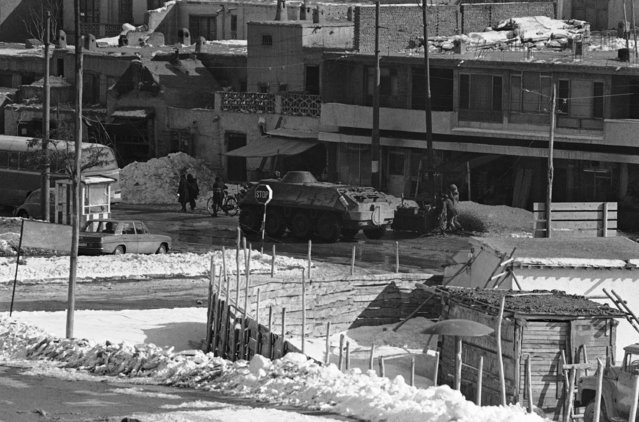
Soviet military vehicles rumbling through the streets of Kabul in January 1980. It is now over a month since Russia invaded Afghanistan. (Photo by AP Photo)

Russian soldiers sitting on a tank in the Hindu Kush mountains during the invasion of Afghanistan by the Russians, January 1980. They are on the road between Mazar-i-Sharif and Russia. (Photo by Romano Cagnoni/Getty Images)
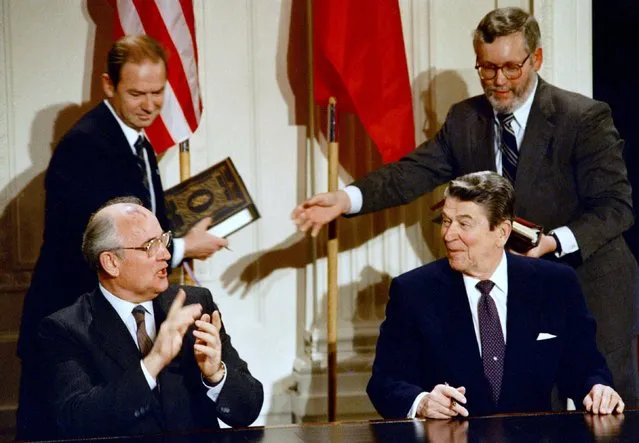
Soviet leader Mikhail Gorbachev applauds during a treaty-signing ceremony with President Ronald Reagan in the White House East Room, December 8, 1987. Reagan and Gorbachev signed an historic treaty to eliminate intermediate-range missiles and together vowed to work toward a more ambitious arms control pact during their three days of meetings. Others are unidentified. (Photo by Bob Daugherty/AP Photo)
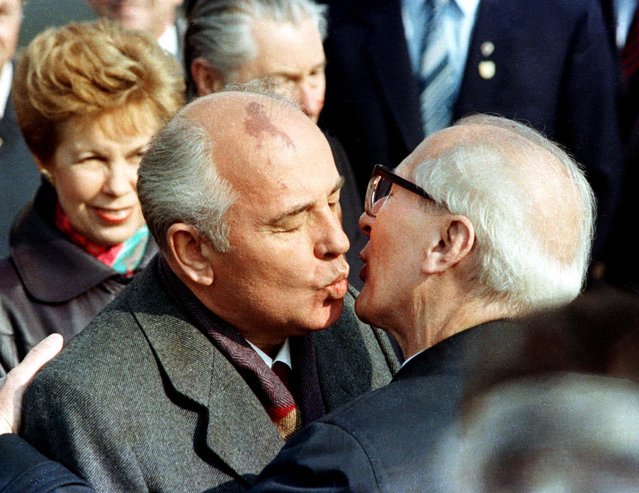
Soviet Leader Mikhail Gorbachev and his wife, Raisa, are welcomed by East German Leader Erich Honecker (R) with a fraternal kiss in East Berlin after the Gorbachev's arrive to celebrate the 40th anniversary of East Berlin, October 6, 1989. (Photo by Reuters/Stringer)
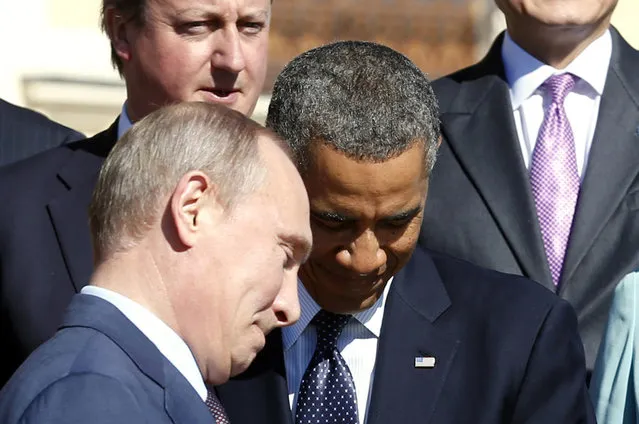
Russian President Vladimir Putin (L) walks past U.S. President Barack Obama (C) during a group photo at the G20 Summit in St. Petersburg September 6, 2013. At top left is British Prime Minister David Cameron. (Photo by Kevin Lamarque/Reuters)
16 Mar 2014 07:44:00,
post received
0 comments
